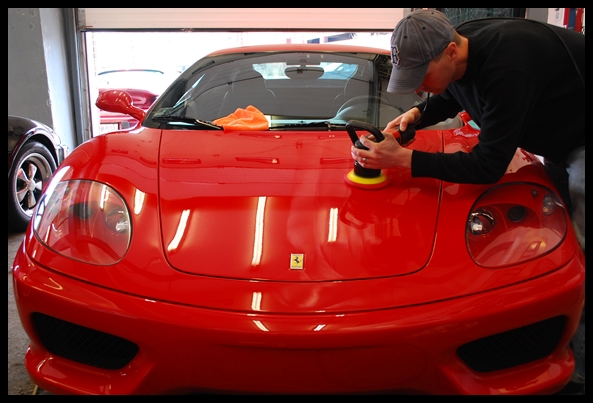Our detailing services may cost a little more than other local shops in the Boston area due to many factors. The biggest factor being that we spend an average of 12 to 25 hours on a paint correction type detail. It is not uncommon for us to spend an excess of 50 hours in extreme cases, but most vehicles fall into the 12 to 25 hour timeframe. If you factor in the time it takes to perform a detail, the cost of quality tools & materials, having the proper insurance and the experience to back it up, we feel our pricing is extremely fair. In this particular business, you truly get what you pay for.
Every vehicle is unique in its own way and every client has different expectations, so pricing can vary quite a bit. No matter what kind of vehicle you drive or level of service you’re interested in, we will do whatever it takes to meet both your requirements and budget without compromising quality. Every car that we service is a rolling advertisement of our company, so be confident that we will go above and beyond the call of duty to ensure your vehicle looks better than you ever could have imagined.

Your Title Goes Here
WE OFFER A VERIETY OF CERAMIC COATING PACKAGES
*CLICK HERE TO SEE OUR CERAMIC COATING PAGE FOR PACKAGES AND PRICING
EXTERIOR DETAILING
What is ‘Paint Correction’?
The term paint correction should only really be used if these imperfections are properly removed and are not just merely covered up or hidden with filler based products. The actual corrective process itself comprises of a small amount of clear coat or paint being removed from the surface with the use of abrasive polishes, which are applied and worked in with appropriate polishing machines, in order to level out the surface.
It’s all in the details
It is important these contaminants are removed before the paint correction process because if they were to become dislodged and caught up in the pad of a polishing machine, they could easily inflict damage onto the surface very quickly. It also helps to leave the surface very smooth, which in turn, allows the polishing machine to move freely over the surface, reducing the possibility of hopping or sticking occurring. Claying the paintwork helps you to properly observe the progress of the correction process because you can see the true condition of the surface as you are working.
Some scratches or imperfections may actually be too deep or severe to safely remove without risking removing to much surface paint or clear coat and so are minimized and reduced as best as possible using techniques with the machine polisher and polish products that round off the edges of the scratches and make them far less apparent in direct light.
Paint correction is a very labor intensive process and is usually the most time consuming part of the car detailing process. In conclusion, paint correction is the process of removing surface scratches and imperfections from a vehicles paintwork, which involves the use of machine polishers and a range of different polish products. A fully corrected vehicle when viewed in direct sunlight will show only true reflections and no swirl marks, scratches or blemishes will be visible to the naked eye.
Lastly, it is important to distinguish between paintwork that has been truly corrected and paintwork that has been treated with products that are designed to mask and fill surface imperfections such as an all in one polish for example. This should not be referred to as paint correction even if no scratches or blemishes are apparent, because they have not been genuinely removed and are still present under the products fillers, which in time, will wash away and reveal them once more.







